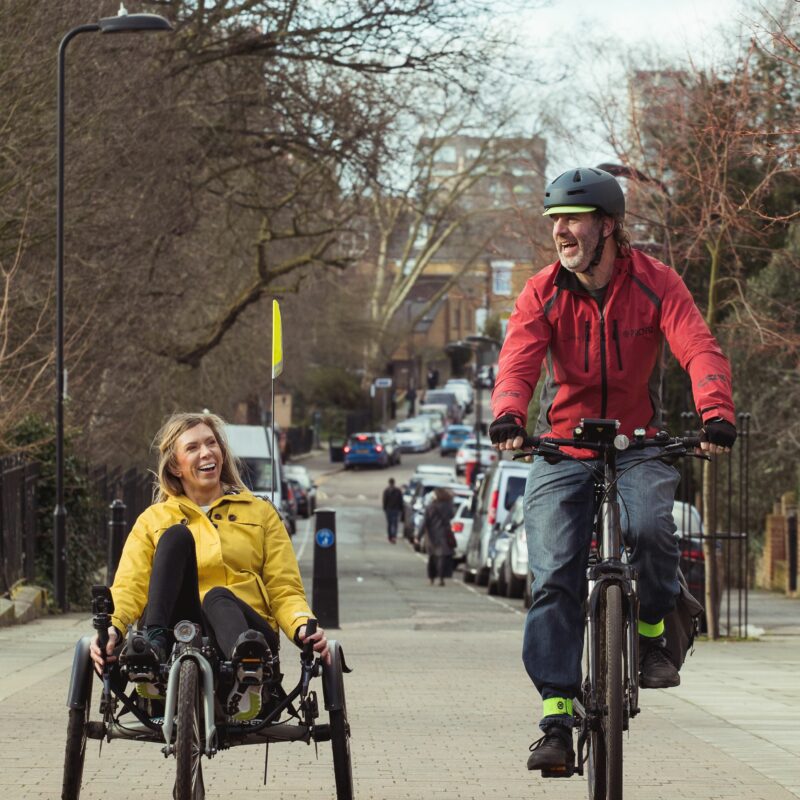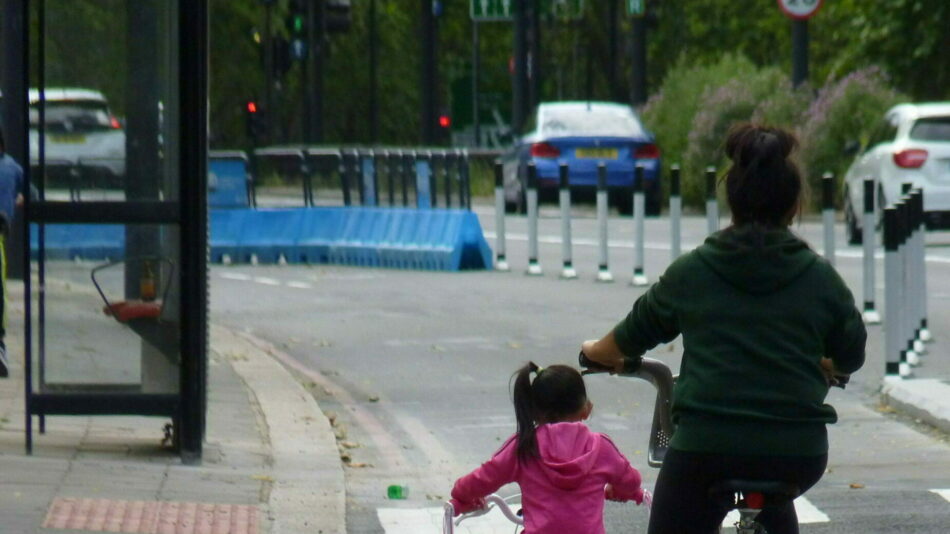
Support the Park Lane changes
From hostile urban motorway to safe space for cycling - Park Lane needs your support to keep the improvements made during the pandemic

From hostile urban motorway to safe space for cycling - Park Lane needs your support to keep the improvements made during the pandemic
Transport for London are consulting on changes they made to Park Lane during the pandemic. This intimidating six-lane, 40mph urban motorway in central London has been tamed with a 20mph limit, bus lane, two-way protected cycle lane and upgraded crossing for walking, cycling and wheeling.
Counts show the cycle lane is used by 2,000+ people a day, and we’ve heard from women who have started cycling because of it. But there are noisy calls to remove it because it’s ‘causing congestion’ (as every cycle track ever apparently does).
Please take two minutes to complete the survey and show your support. This scheme needs more improvements and better connections to a wider cycle network, but it’s an important step in the right direction. Politicians need to hear it’s needed and wanted. You can read more below, or if you’re already convinced, just hit the link!
Before the protected cycle lanes were installed, only the brave could cycle on this hostile road. Now it’s safe for all ages and abilities, and it’s encouraging more women to get in the saddle. LCC’s Westminster group has heard from several women who live in Westminster and only began cycling because of the Park Lane scheme and other protected cycle lanes.

“The Park Lane cycle lanes are invaluable to me to feel safer cycling after dark - I would never take the Hyde Park bike path at those times. I love the new segregated cycle lanes and even feel confident to take my 5-year-old cycling on them” - Clare Thomas
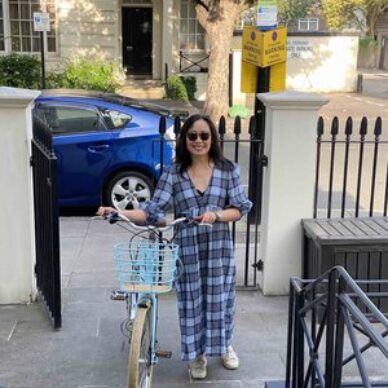
"I started cycling during the first lockdown and the protected cycle lanes allowed me to practise and gain confidence. Without the protected cycle lanes, I simply would not have dared to start cycling" - Lesley Lau
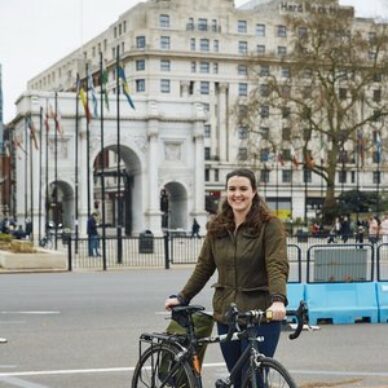
“During lockdown, cycling meant I could get to work in the West End without using public transport and putting my elderly relatives at risk of infection. But I would never have got on a bike without the safety of Park Lane's protected lanes” - Georgia Williams
The Park Lane cycle lanes are more comfortable for riders with disabilities than the shared path in Hyde Park. Anyone riding a recumbent or other adapted cycle will be affected by the path’s cobbled speed humps, for instance.
Isabelle Clement is Director of Wheels for Wellbeing, a charity that campaigns for inclusive cycling. She tells us: “The shared path in the park is uncomfortable for anyone riding a handcycle or anyone unable to stand off their saddle, due to its frequent speed bumps. It also involves regular interactions with pedestrians, making it a stressful ride. The wide, flat Park Lane cycle lanes are much more accessible and easier to ride on.”
Broadwalk, the parallel path through Hyde Park, still carries lots of bikes, probably because Park Lane is still new and not yet well connected to other cycle routes. But the thousands of cycle trips a day on the cycle lanes take the pressure off the park path, making it better for those enjoying the park on foot, and we expect that as it gets better connected more people will switch to cycling on Park Lane.
Park Lane has become an important north-south stretch for cycling in Central London which we hope will soon form part of a wider, joined up network. This is essential to provide a sustainable transport network to help reduce air pollution and carbon emissions.
The alternative and parallel Broadwalk in Hyde Park is an often crowded path used by lots of people on foot. That’s hardly ideal for those cycling through to share with. The path is also not lit and isolated-feeling after dark, and closed some of the time. It also features cobbled ramps that are difficult for some to cycle over.
Ultimately, if and when this route is connected to others, cycling numbers will go far higher, and those cycling want direct routes onward as well.
Not really. It’s possible that the 20mph speed limit, and more road space given to buses and cycling, is one factor in a slight increase in journey times for private motor traffic in the area. But calmer speeds and protected space for cycling cut the risk of death and injury, so frankly, this is worth a few minutes’ delay. And in any case the top cause of congestion in London is too much motor traffic for our road network. To reduce that traffic, we need alternatives – like bus lanes and safe protected bike lanes that any age or ability can use. So ultimately, schemes like Park Lane are the way to start combating congestion in central London.
If you’d like to know more about the scheme, see TfL’s case for change and performance data.
The Park Lane cycle lanes are a big step in the right direction, but more needs to be done. In your response, please ask for the following improvements:
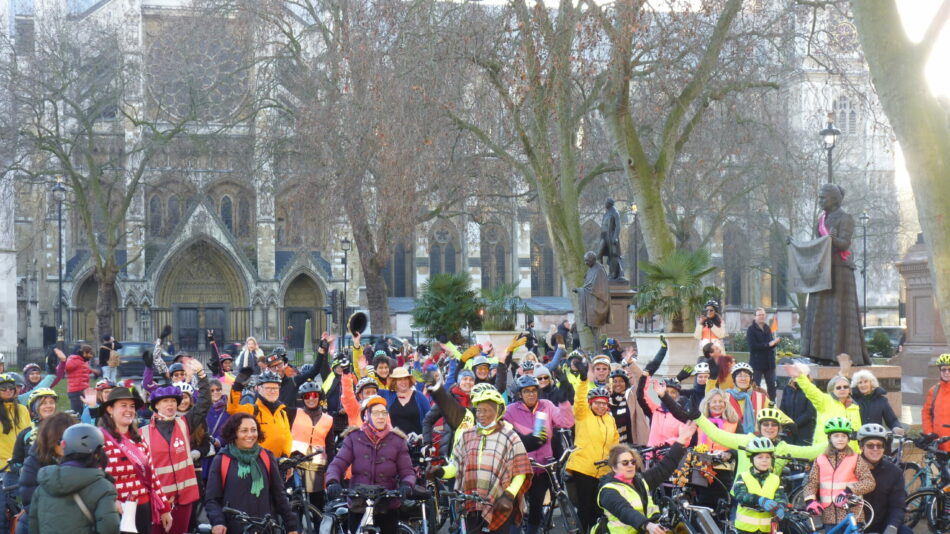
BECOME A MEMBER AND SUPPORT OUR WORK
LCC is highly effective because it's supported by 12,000 members, giving us a powerful collective voice. If you cycle in London please consider joining today. You'll be supporting our work and will receive a host of benefits.
KEEP UP TO DATE
